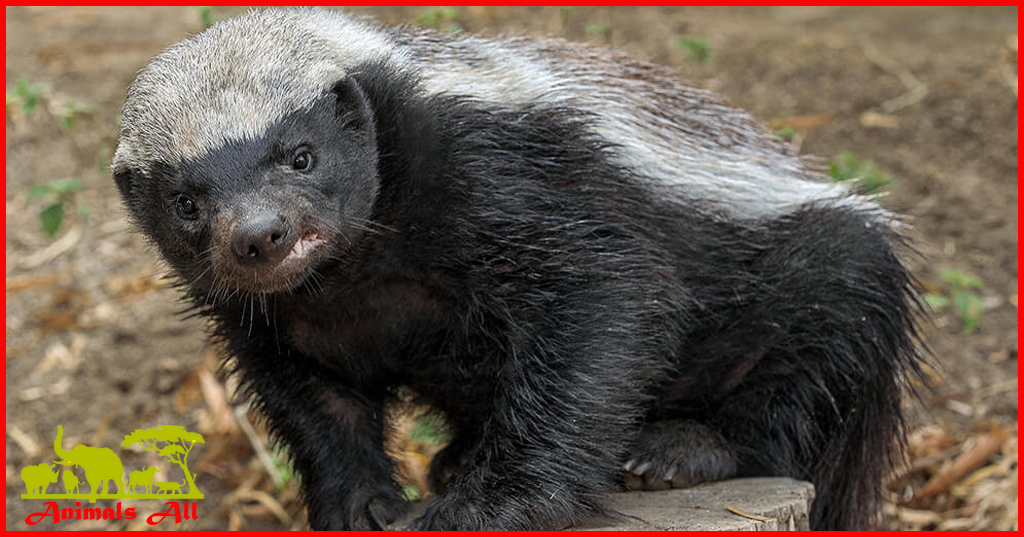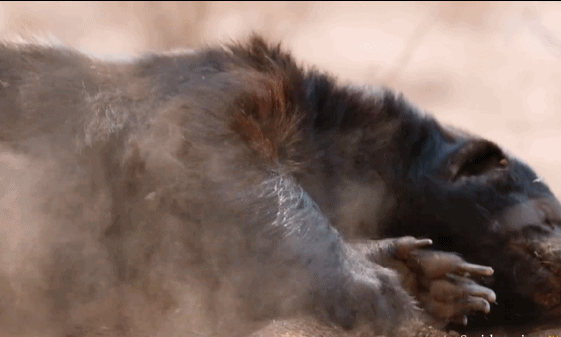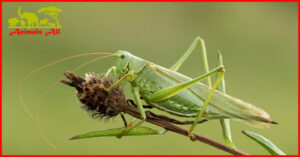
The honey badger has many natural enemies
If we talk about a continent that is home to many creatures and is an animal paradise, Africa must be at the top. As one of the origins of human civilization, Africa has too many incredible stories and rumors, including ferocious hyenas, powerful lions, running wildebeests, leisurely giraffes, and charming flamingos; there are even some primitive tribes. The rich culture makes up the big family of Africa . There are quite a few rumors in the African animal world, and the most surprising rumor may be about a small animal .
African honey badger
This animal is not big, usually only a few dozen kilograms. Compared with lions, hyenas, venomous snakes, and crocodiles in Africa, this inconspicuous little guy is a headache for many animals. This is the African honey badger . As its name suggests, honey is an absolute attraction for honey badgers. It is worth it to have a good bite at any price.

The honey badger has the word “badger” in its name, but it is actually a mustelid . This kind of animal is generally small in size. Like many mustelids, It has its own scent glands . Its rough fur can resist many attacks. Even when facing a swarm of bees, the bees are helpless against the honey badger .
For honey badgers, grasslands are their main habitat, but some live in rainforests and even deserts, which are relatively dry. They are distributed throughout Africa. In addition to honey and bee pupae , which are the main food sources for honey badgers, some small insects are also their food sources . Honey badgers accept almost any edible food, including carrion, berries, and nuts. Even hard dishes like venomous snakes are delicious dishes for honey badgers .
Honey badgers usually live in caves. Their sharp and hard claws can not only help them hunt, but also help them dig holes in the thick soil . Their flat body can move well in caves. Honey badgers have a wide range of activities, and the range of activities of different species is not completely divided into regions, but overlaps with each other .
This is mainly due to the honey badger’s way of survival. Generally speaking, a honey badger family will have multiple females . Male honey badgers will mate with multiple female honey badgers. A female only leads one cub. Young honey badgers need to rely on adult females for feeding. It takes about a year and a half for young honey badgers to become independent, which requires females to go out hunting frequently to feed the young honey badgers .
Another interesting point is that although the honey badger can obtain honey by its strong defense ability, it also has a kind of “cooperative” relationship with other animals in its life. When looking for honey as a food source, the honey badger cannot match the senses of some birds, while the black-throated honeybird can accurately find the beehive, and then it will make a call to attract the attention of the honey badger . After finding the beehive, the honey badger will destroy the beehive and eat the honey with the black-throated honeybird .
It has grayish-white hair on its back, a flat head, a slender body, and ears that are close to the sides of its head. Its entire face looks relatively flat, hence the name “Flat-headed Brother” .
Honey Badger’s Natural Enemies
Animals living in Africa face threats from many places. For animals, the most common threat is hunting and being hunted. Lions, cheetahs, hyenas, and crocodiles are the bullies on the African grasslands, firmly stabilizing the balance of the entire food chain .
Large cats usually occupy the top of the food chain in Africa. Small opponents like honey badgers are not even small, but can only be described as petite. Large cats such as lions usually have a bite force of up to 400 kilograms , and their sharp canine teeth can easily penetrate the prey’s head and carotid artery . For these top predators, eating a honey badger is naturally not a big problem . It can be said that on the African grasslands, honeypots have too many natural enemies .

In addition to lions, there are also cheetahs. In most cases, people think that cheetahs catch antelopes, zebras and other animals. Honey badgers, which seem to have little meat, are actually one of the menu options for cheetahs. However, cheetahs consume a lot of energy when hunting. Honey badgers are mostly hairy, and their long and flat bodies can easily slip away from the cheetah’s mouth and run back to the cave .
There are also “despicable” predators like hyenas . Hyenas usually hunt in groups . After discovering their prey, they will surround the prey and attack it one after another, while also trying to distract the prey’s attention .
Compared to large cats like lions, hyenas may seem smaller, but their bite force is far beyond your imagination. With a bite force of more than 500 kilograms, they can easily tear off large chunks of meat from their prey. Once a lone honey badger is targeted by a group of hungry hyenas, it will naturally be preyed upon .
In addition to adult honey badgers facing the fate of being preyed on, young honey badgers will also face threats from other animals during their growth . Whenever female honey badgers go out to look for food, carnivores such as jackals will come to their homes and enter their dens to kill their cubs while the females are away. Surprisingly, adult female honey badgers will also kill their cubs, which may be related to the honey badgers’ violent temper.
Fearless Honey Badger
Honey badgers are small in size and are at risk of being preyed upon. The African grasslands are also full of dangers and murderous intentions, but the number of honey badgers has remained stable. It is called “Flat-headed Brother” not only because its head looks flat, but the word “brother” in the nickname also shows that this creature is not easy to mess with . Even though the honey badger has many natural enemies, none of them can cause serious harm to them.

When facing the danger of predators, most animals tend to flee, but honey badgers are different. Compared with antelopes and wildebeests, which have excellent escape abilities, honey badgers can only run at a speed of about 13 kilometers per hour, and if they can’t outrun their predators, the result is often a head-on confrontation .
When a conflict occurs, This will directly choose to attack. The honey badger is not completely a weak animal. It has hard claws about 5 cm long on its feet . Although it does not have fangs like lions and cheetahs, the honey badger’s teeth are still sharp . The thick fur can resist the bites of predators to a certain extent. The thickest part of the honey badger’s skin can reach 5 cm , and the fur is not completely connected to the skin , which makes the honey badger feel a lot softer. The flat body can easily avoid attacks . Even if it is bitten, the flexible posture allows the honey badger to turn around and bite back at the predator .

Honey badgers do not have a large body, so they will not bite the attacker’s head or body. Due to their small size, honey badgers will choose to attack the animal’s genitals, mouth, nose and other vulnerable parts .
Don’t underestimate its small body. The honey badger also has sharp teeth and powerful jaws. Even for thick-shelled creatures such as tortoises, the honey badger can bite through the shell to get food. According to the description of local indigenous people, it is difficult to pierce the body of the honey badger even with a bow and arrow or a spear, which makes hunting honey badgers a very difficult activity .
As a predator, the honey badger is not afraid of hunting snakes. When facing a venomous snake, its method is very simple. It just bites it. Due to its thick fur, it is difficult for venomous snakes to bite the honey badger and inject venom . The venom of venomous snakes is fatal to almost any animal, but the honey badger is not afraid. Even if it is bitten and poisoned, the honey badger will not die, but will fall asleep and continue to eat after waking up.
As for resistance to snake venom, researchers have discovered venom resistance in honey badgers . Snake neurotoxins and alkaloids do not react in the honey badger’s blood . This is equivalent to the human’s own immune system, which fundamentally resists the invasion of snake venom.
Honey badgers are neither too big nor too small. If a predator chooses one, it will definitely fight with it for a long time before it can eat it. There are accurate records showing that it is not easy to prey on this kind of animal . Zoologists have found in their observations of honey badgers that a lion fought with a honey badger for six hours overnight but still failed to subdue it. In the end, the honey badger escaped from the lion’s mouth.

Acute irritability and bad temper
The badger’s bad temper is also one of the reasons for its ferocity. The badger also has a certain sense of territory , and any animal that enters the honey badger’s territory will alarm it. Relying on its thick skin and rich fur, the honey badger will immediately attack the offender .
The metabolism of the honey badger is also very fast, which leads to its high demand for energy . It often rushes on the road to hunt for food. The omnivorous honey badger is not resistant to almost anything that can be eat. If it encounters an animal competing for food, the honey badger will definitely rush up to grab it bravely .
Honey badgers regard any possible animal as a threat, and neuroticism is also one of their characteristics. To survive on the African grasslands, they must always be on guard against any potential dangers. There was a record of a honey badger attacking a lion in an animal shelter in Africa , and the reason was simply that the lion looked at the honey badger for a little longer , which made the irritable honey badger become full of aggressiveness. It dug up the soil under the isolation fence overnight and fought with the lion , which also labeled the honey badger as a vengeful animal . Basically, any animal that stares at a honey badger for too long will become the target of its attack.

Honey badgers are not only fond of fighting, but they are also very clever. A rehabilitation center in South Africa once adopted a honey badger. After cleaning the honey badger’s nest, the cleaning staff left a broom inside. The clever honey badger used the broom to escape by climbing the wall , and then immediately looked for food. Finally, the keeper found this “escaped” little guy in the kitchen. Another reason why honey badgers are aggressive is the special structure of their eyes. The inside of their eyes is a concave mirror structure , which makes the objects they see much smaller than they actually are. In their eyes, there is almost no concept of size equality .
In most reports, the honey badger is portray as a fearless and fierce warrior . The fact, the honey badger is small in size and easily captured by many large carnivores. In order to survive, the honey badger will not deliberately seek to fight. It will only attack when it feels dangerous . It is precisely because of its bad temper, vigorous metabolism and strong demand for food that the honey badger appears so aggressive .
Although the honey badger is extremely ferocious, it is not invincible. It may not be able to escape the fate of being eat by large carnivores. Its superior resistance to snake venom is also a metabolic mechanism different from other animals acquire in long-term evolution . If too much snake venom accumulates , the honey badger will still die from poisoning . For such a smelly and hard guy, it is not worth it for lions and cheetahs to spend so much effort just to eat this little bit of meat. It is not as good as herbivores full of meat.
Conclusion
In order to survive on the African continent, this small animal has used all its strength to fight against this dangerous world. Rather than saying that no animal can cause real serious harm to the honey badger, it is better to say that this is what it has fought for, and it will never compromise or admit defeat at any time . The law of the jungle of the survival of the fittest is vividly reflect here. It has no choice but to take the initiative to attack so as not to be at a disadvantage . Even if it risks its life, it will leave a deep impression on the opponent. This fierceness adds a sense of power to the African grasslands.


One thought on “The honey badger has many natural enemies”
Comments are closed.